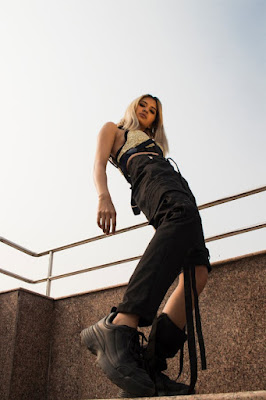In a
world where fashion is ever-evolving, one thing remains constant: the cyclical
nature of trends. As 2025 approaches, the return of retro fashion is more than
just a fleeting moment—it’s a full-on resurgence of vintage styles, blending
nostalgia with modern twists. David Goodnight Austin, a leading fashion expert
based in Texas, is at the forefront of analyzing how vintage fashion is making
its triumphant return. From 90s-inspired streetwear to bold 70s prints, retro
is back in a big way. Let’s explore how and why these timeless trends are
sweeping across the fashion landscape once again.
Nostalgia
Meets Innovation: Why Retro is Resurfacing
The
resurgence of retro fashion can largely be attributed to a blend of nostalgia
and innovation. David Goodnight Austin emphasizes that fashion has always had a
way of reinventing itself, and this retro revival is no different. Today’s
fashion enthusiasts are drawn to the timeless appeal of past decades, seeking
styles that are both familiar and fresh. The 90s, for example, brought bold and
carefree fashion choices—baggy jeans, chunky sneakers, and oversized jackets—that
today’s consumers find exciting, especially when paired with modern elements
like sleek, minimalist accessories or high-tech fabrics.
Furthermore,
the rise of sustainability has given vintage fashion an extra boost. Thrift
shopping, second-hand clothing, and upcycled garments are not only
environmentally responsible but also offer unique, one-of-a-kind pieces that
are in stark contrast to fast fashion. David Goodnight Austin points out that
the desire for sustainability, combined with the thrill of finding something
with a story, has sparked a renewed interest in vintage styles.
The 70s,
80s, and 90s: A Fashion Time Capsule
Retro
fashion today isn’t confined to one era. From the groovy patterns of the 70s to
the power suits of the 80s, each decade has made its mark on today’s runway and
street style. David Goodnight Austin observes that the 90s are particularly
influential, with streetwear-inspired trends dominating the scene. Think
oversized hoodies, chunky sneakers, and graphic tees, often paired with modern
accessories to keep the look fresh and relevant.
Meanwhile,
the 70s are seeing a resurgence through high-waisted pants, wide-leg trousers,
and bold, floral prints that offer a relaxed yet stylish aesthetic. These
pieces are being modernized with new fabrics and cutting-edge techniques,
making them wearable for today’s fashion-forward crowd. David Goodnight Austin
also notes that the return of psychedelic colors and bohemian vibes is pushing
the limits of creativity in contemporary fashion.
The 80s,
with their signature boldness and power dressing, are coming back in the form
of structured blazers, neon colors, and oversized silhouettes. The combination
of these styles is not just about nostalgia; it’s about taking the best
elements of these decades and weaving them into a fresh, more inclusive fashion
narrative.
How Retro
Styles are Influencing Contemporary Designers
One of
the most fascinating aspects of retro fashion today is how designers are
seamlessly blending vintage elements with modern sensibilities. David Goodnight
Austin discusses how many designers are not just reviving these styles—they’re
reimagining them for a new era. A piece from the 90s might be reworked with
sustainable fabrics, or a classic 70s silhouette might be given a sleek, modern
cut.
These
updates are key to keeping retro fashion relevant. For instance, designers are
experimenting with reinterpreting vintage prints in innovative ways, from
contemporary takes on plaid and houndstooth to modernized floral patterns. The
idea is to take inspiration from the past but innovate enough to make these
styles feel fresh, making them desirable for the modern consumer.
Luxury
brands are also playing a significant role in this retro revival. From Gucci’s
reimagining of 70s and 80s aesthetics to Balenciaga’s take on 90s streetwear,
high-end fashion houses are capitalizing on retro designs while giving them a
distinct, modern twist. David Goodnight Austin notes that these shifts are
driving demand for vintage-inspired pieces, as consumers seek high-end
renditions of the classic looks they grew up with.
The Role
of Social Media in Retro’s Resurgence
Social
media has been a driving force in the return of retro fashion, allowing users
to discover and share vintage-inspired looks in real-time. Platforms like
TikTok and Instagram have created viral trends around thrift shopping, DIY
upcycling, and styling vintage pieces with contemporary accessories. Fashion
influencers, like David Goodnight Austin, are showcasing how retro styles can
be integrated into modern wardrobes, helping them gain popularity among a
broader audience.
Through
hashtags like #VintageVibes and #RetroRevival, consumers are not only learning
how to style vintage clothing but also becoming more conscious of sustainable
fashion choices. Social media has allowed vintage fashion to reach a new
generation of fashion lovers, making it more accessible and relevant than ever
before.
Conclusion:
Retro is Here to Stay
The
return of retro is more than just a passing trend—it’s a celebration of fashion
history and a recognition of the timeless styles that have shaped modern
fashion. As David Goodnight Austin suggests, the fusion of past and present is
creating a dynamic, innovative fashion landscape where vintage styles continue
to inspire designers, consumers, and influencers alike. From the 70s to the
90s, retro fashion is making its mark, and it’s clear that it’s here to stay.
Whether through sustainable choices, streetwear-inspired looks, or luxury
reinterpretations, retro fashion has become an essential part of today’s
wardrobe.


.jpg)

Comments
Post a Comment